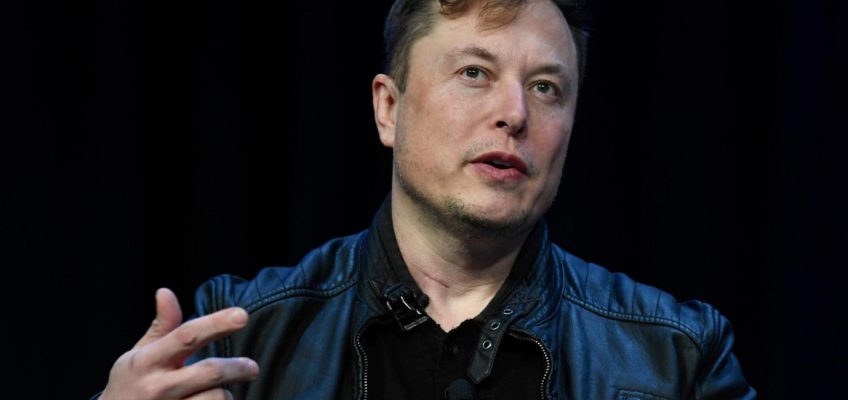Jaclyn Cosgrove | (TNS) Los Angeles Times
Just five hours north of Los Angeles sits a national park that should be on your outdoor bucket list.
It features a valley carved millions of years ago by glaciers, hulking mountains made of granite and other rock, countless waterfalls, massive ancient trees and a cool, clear river.
I know what you’re thinking: “That sounds like Yosemite.” Even better. It’s like Yosemite, but way more chill.
Kings Canyon National Park will give you the majestic outdoors respite you’re dreaming of without all the busy trails, swarming crowds and traffic jams at the park entrance gate that come with the Hollywood Boulevard of national parks. Just east of Fresno, this swath of paradise is the underrated local favorite, with welcoming campgrounds, easy-to-navigate day trails, plentiful backpacking opportunities and swimming holes galore.
As I was heading out to report this story, I steeled myself for the typical national park experience. As someone who once accidentally got into a spat with another grown adult at Yellowstone National Park while attempting to help my 5-year-old niece steal a peek at Old Faithful, I know all too well the way chaotic tourist crowds can get under my skin.
But those crowds never materialized. Kings Canyon gets a fraction of the foot traffic that Yosemite does. Last August, Yosemite saw almost 594,000 visitors, and Kings Canyon saw 81,000, according to federal data. At its busiest, in June of last year, Kings Canyon welcomed 126,000 visitors, which was just over a fourth of the visitors who went to Yosemite that month.
You might be wondering: Is Kings Canyon’s landscape as spellbindingly majestic? The short answer is yes, if a tad more rugged. Both parks feature massive granite mountains, gorgeous rivers and alpine meadows. But Yosemite’s natural wonders have the manicured sheen of a famous name. Kings Canyon is its untamed, serene cousin. When I asked a ranger the name of a nearby cliff, they quipped: “We don’t name everything like Yosemite.” During my three-day stay, I heard multiple guests say: “This is like a chill Yosemite.”
In fairness, many of the best experiences you can have at Kings Canyon are in the back country and require some level of backpacking knowledge. But even if you’re a camping novice, this guide outlines the many different ways you can experience the park, whether it’s from a cozy lodge or magnificent campground.
This guide focuses on the Cedar Grove area of the park. After being closed for more than a year because of major flooding, it reopened this summer. Its campgrounds are slowly but surely becoming available to book. (More on how to do that below.)
Please enjoy your stay in this slept-on paradise. And eat your heart out, Yosemite.
Getting there
Sequoia and Kings Canyon National Parks are two parks managed as one. Kings Canyon is the northern half of the parks. They have several entrances. The most direct way to reach the Cedar Grove area of Kings Canyon National Park from L.A. is to take Highway 180 near Fresno to the Big Stump entrance.
From here, you’ll follow this scenic seasonal roadway into Kings Canyon. It’s a beautiful drive, especially the beginning that passes through Sequoia National Forest. There you’ll be met with incredible vistas and waterfalls, including one you can take a short walk to visit. (More on that below.)
This route is not accessible year-round. Highway 180 from Grant Grove Village to Cedar Grove is open seasonally. It generally opens the fourth Friday in April and closes in mid-November. You can check the road conditions on the Kings Canyon website.
If you’d like to take the scenic way to reach Kings Canyon, you can drive through Sequoia National Park via Highway 198. You’ll pass through the idyllic town of Three Rivers before entering Sequoia National Park. A slow winding journey, you’ll drive about 46 miles north until you reach the Highway 180 junction. There are several great places to stop along the way. Honorable mention goes to the General Sherman Tree, a giant sequoia that’s one of the largest and oldest trees in the world.
If you’re craving more giant trees, this route offers multiple spots to see them, although it will add about two hours to your trip. You can also take the first route mentioned and stop at the Grant Grove area of Kings Canyon before you reach Cedar Grove, which doesn’t feature sequoias like the rest of the parks.
Take note that if you have the “avoid tolls” option selected on your mapping app, it might try to direct you to take an unpaved road to avoid paying the park entrance fee. In short: this is a bad idea. Also, beware that service is scant in these parts, so it’s best to download the area on your GPS app before you leave. While I’m ticking through lifesaving necessities, be sure to top off your gas tank in a nearby town before entering the park, since options are limited inside. At present, there are no electric car chargers in Sequoia and Kings Canyon. Best to enter the park with a full charge.
Where to stay
Sentinel Campground
Reopened in July, Sentinel Campground is the only campground open in the Cedar Grove area of Kings Canyon as of late August. It offers 82 sites for tents, RVs and trailers that you can reserve on Recreation.gov. There are no first-come first-served sites in the campground.
The South Fork of the Kings River runs along the northern side of the campground, near a handful of coveted (read: quickly booked) sites. But you don’t have to be next to the river to enjoy yourself. No matter where you end up staking your tent, you will be treated to a dark sky full of twinkling stars, a concert of crickets, the calming sound of the nearby river rushing and the soothing whoosh of wind through the canyon. This is hopefully not all drowned out by the roar of your neighbor’s RV generator. Quiet hours are at 10 p.m. after all.
Steller’s jays and robins may appear when you start cooking your dinner, optimistic for a treat. Hopefully, you aren’t greeted by one of the park’s larger hungrier residents, the black bear. Throughout the campground, there are flush toilets, sinks to wash dishes and spigots with drinking water. Each site has a campfire ring, picnic table and bear-proof food storage box.
During the day, when you aren’t out adventuring, you can find a shady spot beneath a towering ponderosa pine or cedar tree. Some might even be small enough to hang a hammock.
The Cedar Grove Lodge
Location, location, location! The Cedar Grove Lodge is a rustic but charming throwback to simpler times. The Wi-Fi is iffy at best, and there aren’t televisions in the rooms. But you aren’t coming here to hang out in your room. The lodge is close to all the area’s main attractions. It’s situated next to the Kings River, where guests pull up a lawn chair and enjoy the serenity of the space. It offers standard and suite rooms with queen and king beds and a complimentary breakfast.
It also has a gift shop (with fairly priced souvenirs), a market and the Cedar Grove Diner, a counter-service snack bar, on its first floor. From 4 p.m. to 8 p.m., the diner serves burgers, sandwiches and wraps. The menu includes beef, chicken and fish offerings as well as a plant-based veggie burger and hummus wrap. But sorry, no fries.
Meanwhile, its market is a good resource in case you forgot to pack something. It sells tent stakes and chairs, as well as food and ice.
The most luxurious part of the Cedar Grove Village area is the showers, available to anyone in the park. The lodge’s market sells shower tokens for $1.50 for three minutes. (You can use multiple tokens to extend your hygienic routine, but make sure to allow each token’s time to run out before inserting the next. Otherwise, it’s a wasted token.)
Other options
Outside Kings Canyon, nearby campgrounds include:
—Convict Flat Campground, a first-come first-served spot with five campsites in Sequoia National Forest. It’s free to use with the entry fee you pay to get into the park. Light on amenities, it has a vault toilet and no potable water. It’s about 11 miles from the Cedar Grove area of Kings Canyon.
—Princess Campground, an 88-site reservation-only site in Sequoia National Forest featuring giant Sequoia stumps, a Sequoia grove and a meadow with wildflowers. Amenities include drinking water, vault toilets and an amphitheater. It’s about 23 miles from the Cedar Grove area of Kings Canyon.
—Sunset Campground, a 158-site reservation-only campground in Sequoia National Forest, three miles from the Kings Canyon entrance. It boasts beautiful trees, cellphone reception, flush toilets and a camp store that sells ice, firewood and other necessities. It’s about 30 miles from the Cedar Grove area of Kings Canyon.
What to pack
If camping, you’ll want to pack the usuals, including: a tent, sleeping bags, an air mattress or other cushioning, extra blankets and pillows. Remember to pack a few light sources. I always like to have both a headlamp and a few solar-powered lanterns. And, just because I’ve forgotten each of these items on various trips, I will remind you: Don’t forget to bring a mallet for your tent stakes, your camping chairs and a shovel to dig out the campfire pit.
You will not have cellphone reception in the Cedar Grove area. For safety reasons, you should share your trip itinerary with a family member or friend, along with an estimated time of when you’ll be back. There is a pay phone at the Cedar Grove Lodge. For the zoomers reading, that’s a coin-operated phone you can use to make calls. Maybe put a roll of quarters in your car, just in case.
Bear safety
Kings Canyon is home to American black bears. Throughout the park, you’ll find signs reminding you to be “bear aware.” That includes ensuring that all food, beverages and scented items (like shampoo, toothpaste and lip balm) are stowed in a bear box when you aren’t using them. This applies to not only campgrounds but also trails. At trailheads, you will find bear-proof brown vaults where you should stow any snacks and scented items you aren’t taking on the hike. (I left half a bar of chocolate in one, and no one stole it. The honor system is alive and well in this park!)
The park advises that, if you see a bear, clap your hands and in a loud firm voice yell: “Get out of here, bear!” You should report all bear sightings to a ranger. Leave the bear spray at home, though. Bear spray is illegal in national parks where only black bears are present.
Where to day hike
The Kings Canyon Cedar Grove area has plenty of day hikes to choose from, all of which you can hike without a permit. Wilderness permits are required only for overnight trips. Here’s a three-day itinerary of the best spots to go to if you’re visiting for a quick weekend.
Roaring River Falls to Zumwalt Meadows
Day 1: After setting up your tent, hit the trails for an introductory stroll at the Roaring River Falls parking area. This short paved path leads you to a nice-sized waterfall noisy enough you’ll know how it earned its name. This is a nice spot to unwind and have a picnic. (Though swimming is not advised. Drowning is the most common way people die in Sequoia and Kings Canyon National Parks.)
Once you’re done at the waterfall, you can take the nearby dirt path about two miles to the backside of Zumwalt Meadows. Flooding in 2019 washed out its boardwalk, so this is no longer a loop trail. That said, it’s a pleasant walk between the canyon walls where you can appreciate your first taste of beauty before embarking on bigger adventures tomorrow. Plus, there are a few sandy spots where the current is manageable. Life jackets are advisable for younger kiddos or anyone who cannot swim.
Mist Falls trail
Day 2: This is when you’ll want to do your longest hike. For that I’d recommend heading to the Road’s End parking area to tackle the Mist Falls trail, an eight-mile out-and-back trail that will lead you through forest, wetlands, over boulders and up to a massive, humbling cascade of water. The last mile is where you gain the most elevation, so make sure you’re hydrated and sated with a power snack for that final push. After completing the trail, head over to Muir Rock for a swim. Be mindful of the current.
Hotel Creek trail
Day 3: Do you have one more hike in you? Great! This last one is a treat, especially as the sun rises. Head to the Hotel Creek trailhead, located about a half mile north of the Cedar Grove Lodge. You have two main options here. You can hike 4.4 miles out and back to the Cedar Grove overlook, where you will find panoramic views of the whole park. Or, you can do a 7.3-mile loop of Hotel and Lewis Creek. From the overlook, I watched the early morning light over the canyon, feeling like a little speck of stardust in our vast universe.
Bonus: I was alone until the final mile when I saw three hikers. Like I’m saying: a chill Yosemite!
Other activities
—Fishing is allowed in most areas of Kings Canyon. Those 16 and older must have a valid California fishing license. The park advises you should buy one before arriving, as they aren’t always available in its markets. You are allowed to keep some of what you catch, including rainbow trout. You must follow daily limits, and must take note of the areas of the park that are catch and release only.
—Horseback ridesare sold through the Cedar Grove Pack Station. They offer one- and two-hour rides for $70 and $110 respectively, and half ($180) and full-day ($230) trips. They also sell pack trips where mules and horses, led by a packer, carry your group and gear to a backcountry site.
—Head underground to the Boyden Cavern, a marble cavern that features stalactites, stalagmites and other geological delights. A walking tour, which takes about an hour, will cost between $8 and $23 depending on age, date and time. Staff also offers a flashlight tour at 9 a.m. and 5 p.m. if at least four people buy tickets. That tour takes up to 75 minutes and is $35. The cavern is about 10 miles west of Cedar Grove off Highway 180.
—Picnic near Grizzly Falls, an 80-foot waterfall in Sequoia National Forest, just under five miles from Cedar Grove. It’s a short walk from your car to the picnic area where you can view the falls.
Regardless of whether you spend your days relaxing along the South Fork, or hit the back country for more rugged hiking, you will return home feeling refreshed and energized. In an era where escaping the bustle of the city often means swapping one type of crowd for another, Kings Canyon is an underpopulated gem that, for now, proves that nature can still be peaceful.
_______
©2024 Los Angeles Times. Visit latimes.com. Distributed by Tribune Content Agency, LLC.




